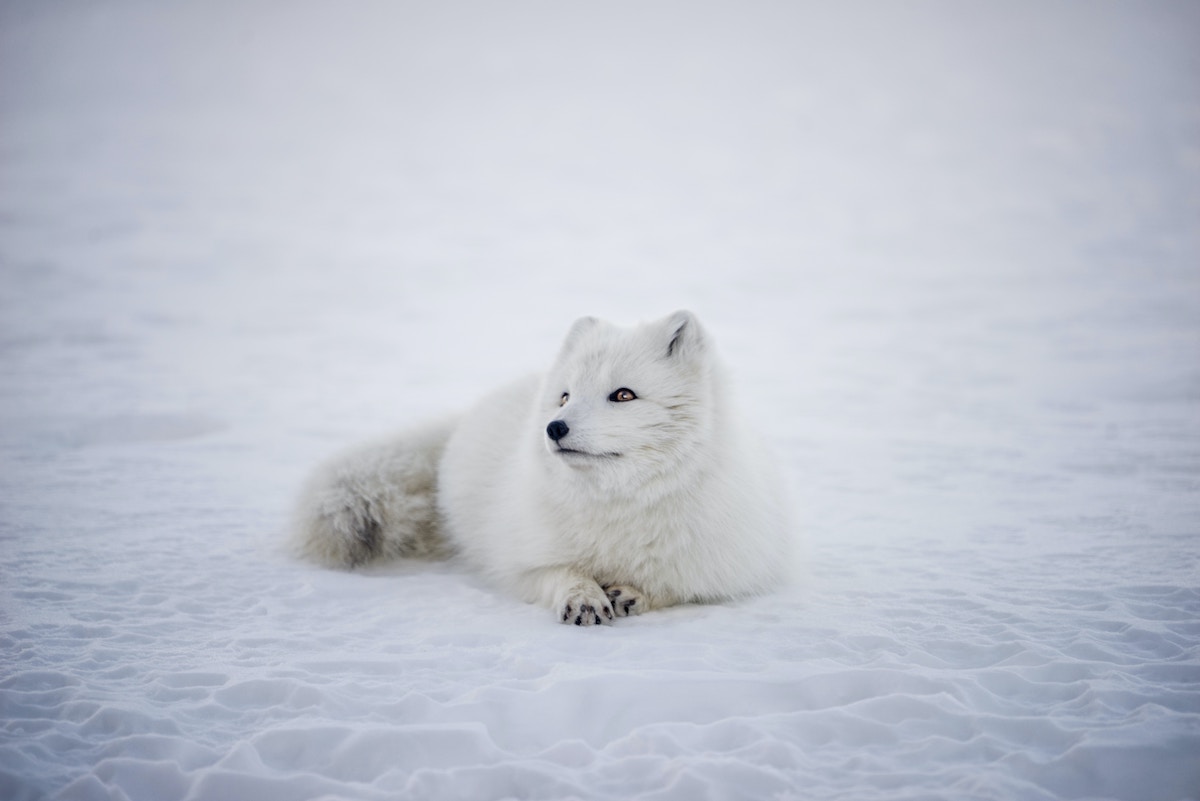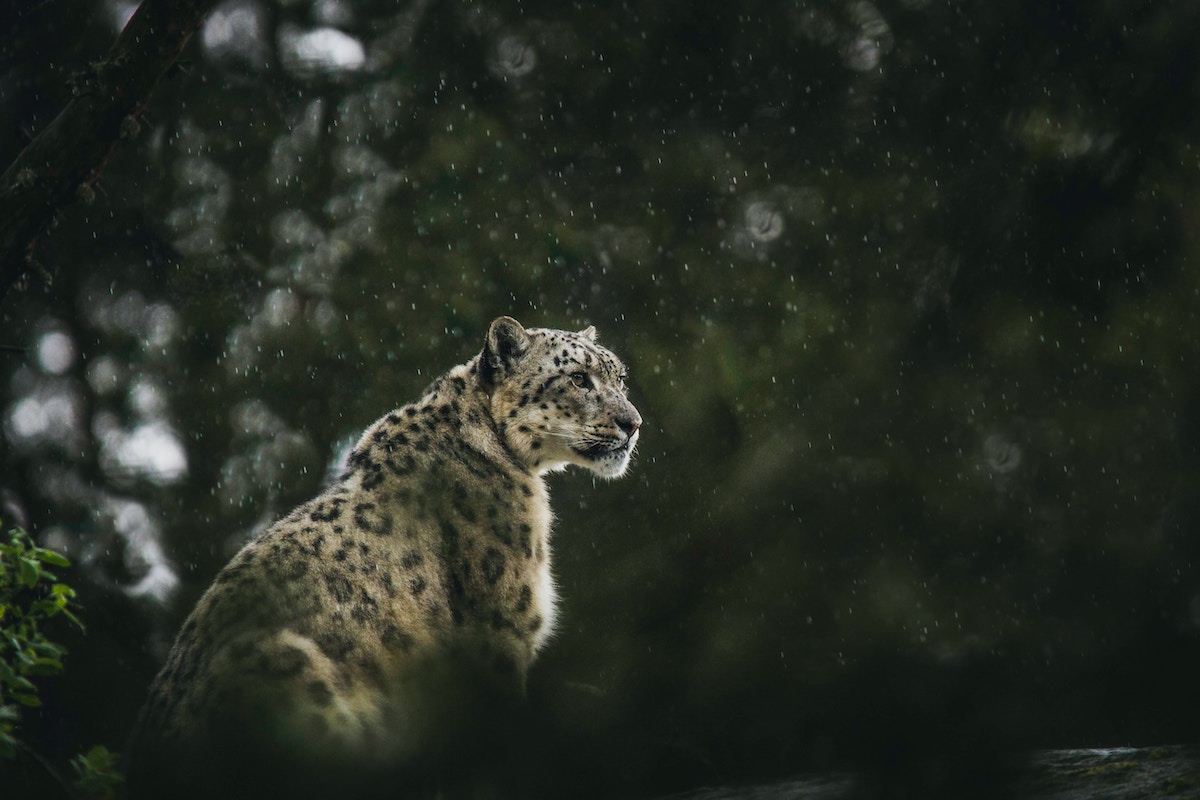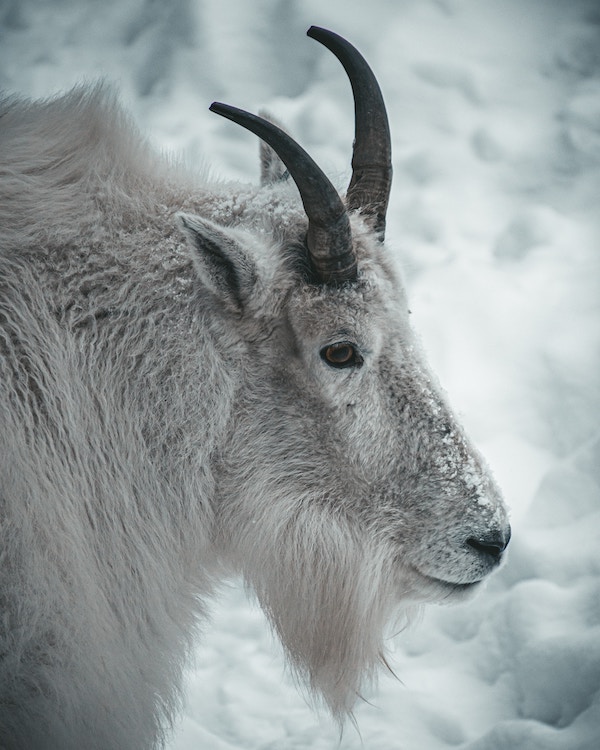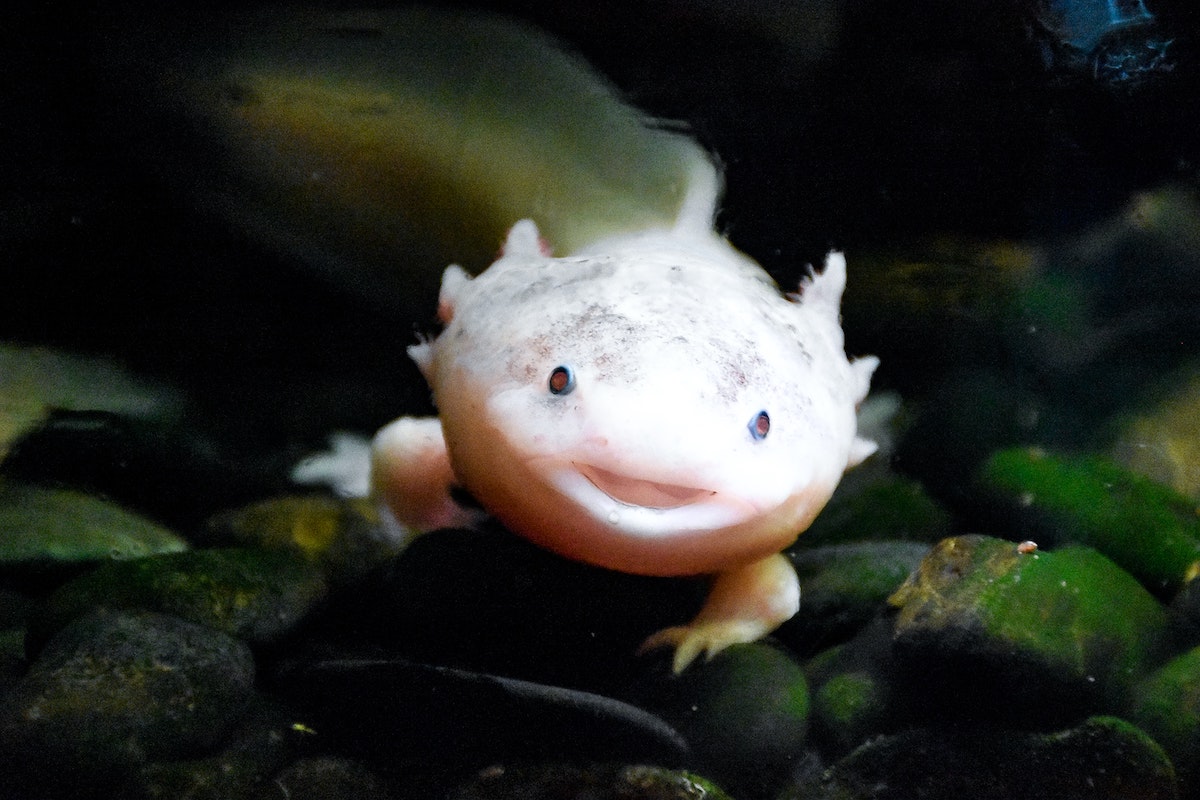
25 Animals that Live in the World’s Harshest Climates & Most Dangerous Terrain
By: Sarah Stone
Skip to Section
- 1. Polar Bear
- 2. Emperor Penguin
- 3. Dromedary Camel
- 4. Tardigrades
- 5. Tube Worms
- 6. Antarctic Krill
- 7. Snow Leopard
- 8. Arctic Fox
- 9. Yeti Crab
- 10. Fennec Fox
- 11. Musk Ox
- 12. Naked Mole Rat
- 13. Alpine Ibex
- 14. Kangaroo Rat
- 15. Pompeii Worm
- 16. Wedge-Tailed Eagle
- 17. Bactrian Camel
- 18. Mountain Goat
- 19. Altiplano Chinchilla Mouse
- 20. Leatherback Sea Turtle
- 21. Snow Petrel
- 22. Jerboa
- 23. Axolotl
- 24. Desert Rain Frog
- 25. Gelada
Surviving in Earth’s harshest and most extreme environments requires some truly incredible adaptations. From the freezing tundra of the Arctic to the scorching heat of the desert, remarkable creatures have evolved to survive and thrive in these extreme conditions.
Let’s look at a few of the most amazing animals that have adapted to extreme climates and conditions—on land, sea, and air!
1. Polar Bear
Where you can find them: Arctic Tundra
Polar bears are the largest land carnivores in the world and are famous for their incredible resilience to cold. They have a layer of fat up to 4.5 inches thick, a dense coat of fur, and a water-repellent coat that enables them to survive in temperatures as low as -50 degrees Fahrenheit. They also have black skin underneath their fur to absorb and retain heat from the sun.
2. Emperor Penguin

Photo by Hubert Neufeld on Unsplash
Where you can find them: Antarctica
Emperor penguins are the tallest and heaviest of all living penguin species and are endemic to Antarctica. They can withstand temperatures that drop to -76 degrees Fahrenheit. Unique adaptations include a large fat storage to provide energy and insulation during long fasting periods, densely packed feathers that provide a waterproof coat, and the social behavior of huddling together in large groups to conserve heat.
3. Dromedary Camel
Where you can find them: Deserts
Also known as Arabian camels, they are well adapted for life in harsh desert climates. They can drink up to 30 gallons of water at once and can lose up to 30% of their body weight in water without suffering the ill effects of dehydration. Their body temperatures can fluctuate between 95 and 107 degrees Fahrenheit, and their humps store fat which can be broken down into water and energy when food and water are scarce.
4. Tardigrades
Where you can find them: Extreme conditions
Also known as water bears or moss piglets, tardigrades are some of the most resilient creatures on the planet. They can survive in extreme heat (above 300 degrees Fahrenheit) and extreme cold (close to absolute zero), can withstand high levels of radiation, and can go without food or water for more than 10 years by entering a state called cryptobiosis.
5. Tube Worms
Where you can find them: Hydrothermal Vents
These creatures live on the seafloor, where they cluster around hydrothermal vents. These vents spew out water heated to over 700 degrees Fahrenheit by the Earth’s magma, but the water surrounding the worms stays at a livable temperature. They survive without sunlight and use bacteria in their bodies to convert chemicals from the vents into food in a process called chemosynthesis.
6. Antarctic Krill
Where you can find them: Southern Ocean
These small crustaceans live in the cold waters of the Southern Ocean surrounding Antarctica. They can survive freezing temperatures thanks to a special compound called glycoproteins in their blood, which acts as an anti-freeze. They are a crucial part of the Antarctic ecosystem as the primary food source for many larger animals.

Photo by Frida Lannerström on Unsplash
7. Snow Leopard
Where you can find them: Himalayas
Snow leopards are adapted to live in high altitudes and cold mountainous regions of Central and South Asia. They have thick fur, and their wide, fur-covered feet act as natural snowshoes. These cats are perfectly adapted to the cold, arid mountain conditions and are known to inhabit altitudes of up to 6000 meters, where few other animals can survive.
8. Arctic Fox
Where you can find them: Arctic Tundra
The Arctic fox, also known as the white fox or polar fox, is well-adapted to survive in freezing temperatures. It has deep, thick fur that is brown in summer and white in winter for camouflage. The round compact body shape minimizes the surface area exposed to the cold air.
9. Yeti Crab
Where you can find them: Hydrothermal Vents
Also known as Kiwa hirsuta, this unusual crustacean was discovered in 2005 near Easter Island in the South Pacific Ocean. It lives on hydrothermal vents at depths of 2200 meters, in water temperatures as high as 77 degrees Fahrenheit, which is considered extremely high for deep-sea environments.

Photo by Iqbal Muakhid on Unsplash
10. Fennec Fox
Where you can find them: Desert
This small fox is a desert dweller and can be found in the Sahara Desert in Africa. It has large ears to dissipate heat and a thick fur coat that helps to insulate it during cold desert nights. The fennec fox can survive without free-standing water – it obtains its water requirements from the food it consumes.
11. Musk Ox
Where you can find them: Arctic Tundra
These large animals are well-adapted to survive in the harsh conditions of the Arctic. They have a thick coat of fur, and a long outer layer that covers a short, insulating underlayer. This two-tiered system helps to keep them warm in freezing temperatures.
12. Naked Mole Rat
Where you can find them: Underground burrows in East Africa
Naked mole rats live in a harsh underground environment that is low in oxygen and high in carbon dioxide. They are practically blind and have adapted to this environment by developing a remarkable social structure similar to that of bees or ants, where there is only one breeding female (the queen) and a few breeding males – the rest of the mole rats work as soldiers or workers.
13. Alpine Ibex
Where you can find them: Mountains
This wild goat species lives in the European Alps, and is known for its incredible climbing abilities. It can climb steep rocky terrain at altitudes over 3,000 meters where the air is thin and temperatures are cold.
14. Kangaroo Rat
Where you can find them: Deserts
This small rodent can survive in the arid desert environment without ever drinking water. They get all their moisture from the seeds they eat. They are also adapted to the desert’s heat and aridity with a highly efficient kidney that minimizes water loss.
15. Pompeii Worm
Where you can find them: Hydrothermal Vents
These worms are among the most heat-tolerant animals on Earth, thriving in water temperatures up to 176 degrees Fahrenheit. They live in tube-like structures on hydrothermal vents in the deep sea.
16. Wedge-Tailed Eagle
Where you can find them: Deserts
The largest bird of prey in Australia, this eagle can survive in the arid desert and the fierce Australian heat due to its ability to soar at high altitudes where the air is cooler. It can also go for long periods without food.
17. Bactrian Camel
Where you can find them: Deserts
Unlike the dromedary camel, which has one hump, the Bactrian camel has two. This camel is native to the Gobi Desert in Mongolia and China and can withstand temperatures ranging from -40°C in winter to 40°C in summer. Its humps are used for storing fat, which can be converted into water and energy.

Photo by Mohamed Elsayed on Unsplash
18. Mountain Goat
Where you can find them: Mountains
These North American goats can thrive in steep, rocky environments that are typically cold, windy, and have very little vegetation. They have specialized hooves for climbing and can jump nearly 12 feet in a single leap.
19. Altiplano Chinchilla Mouse
Where you can find them: High Altitude
This rodent lives in the Andes mountains and is one of the highest-dwelling mammals, found at altitudes up to 5000 meters. It has adapted to survive the thin, cold air of its high-altitude home.
20. Leatherback Sea Turtle
Where you can find them: Oceans
These are the largest turtles on Earth, and they can tolerate cold water temperatures due to a unique heat retention mechanism. They are found in the Pacific and Atlantic oceans, often venturing into the frigid Arctic Circle waters in search of jellyfish.
21. Snow Petrel
Where you can find them: Antarctica
This small bird is one of only three birds that breed exclusively in Antarctica. It has a special gland that allows it to drink seawater, and it can survive in the freezing, windy conditions of the Antarctic.
22. Jerboa
Where you can find them: Deserts
These small rodents are found in the hot deserts of Asia and Northern Africa. They have elongated hind legs and a long tail, adaptations that help them move around their sandy environment. They also have fur-lined feet to protect against the hot desert sand.

Photo by Artem Lysenko on Pexels
23. Axolotl
Where you can find them: Water with low oxygen
Also known as the Mexican walking fish, this creature is not a fish, but an amphibian that spends its entire life underwater. They can be found in the remnants of Xochimilco, a system of lakes and canals near Mexico City. Axolotls can breathe both through their lungs and gills, making them well adapted to waters that may have low levels of oxygen.
24. Desert Rain Frog
Where you can find them: Deserts
Native to the coastal deserts of Namibia and South Africa, these frogs are adapted to their arid environment. They get most of their water from the food they eat, and to avoid the intense desert heat, they burrow into the sand and remain underground during the day.
25. Gelada
Where you can find them: High Altitude
This primate lives in the high mountain grasslands of Ethiopia, up to altitudes of 4400 meters, making them the world’s most terrestrial primate. They have thick fur to keep them warm in their harsh, windy environment.
These creatures and many more showcase the incredible resilience and diversity of life on Earth. Their unique and often surprising adaptations reveal how species can evolve over time to meet the challenges of their environment, and they offer fascinating insights into the incredible toughness and tenacity of life in all its myriad forms. It’s a reminder of just how adaptable life can be, and how every creature, no matter how big or small, plays a crucial role in the delicate balance of our planet’s ecosystems.
About the Author
 As the editor-in-chief of Frayed Passport, my goal is to help you build a lifestyle that lets you travel the world whenever you want and however long you want, and not worry about where your next paycheck will come from. I've been to 20+ countries and five continents, lived for years as a full-time digital nomad, and have worked completely remotely since 2015. If you would like to share your story with our community, or partner with Frayed Passport, get in touch with me using the form on our About page.
As the editor-in-chief of Frayed Passport, my goal is to help you build a lifestyle that lets you travel the world whenever you want and however long you want, and not worry about where your next paycheck will come from. I've been to 20+ countries and five continents, lived for years as a full-time digital nomad, and have worked completely remotely since 2015. If you would like to share your story with our community, or partner with Frayed Passport, get in touch with me using the form on our About page.Featured image by Jonatan Pie on Unsplash
Information published on this website and across our networks can change over time. Stories and recommendations reflect the subjective opinions of our writers. You should consult multiple sources to ensure you have the most current, safe, and correct details for your own research and plans.
Frayed Passport is a participant in the Amazon Associates Program, an affiliate advertising program designed to provide a means for sites to earn advertising fees by advertising and linking to Amazon.com. We also may share links to other affiliates and sponsors in articles across our website.




